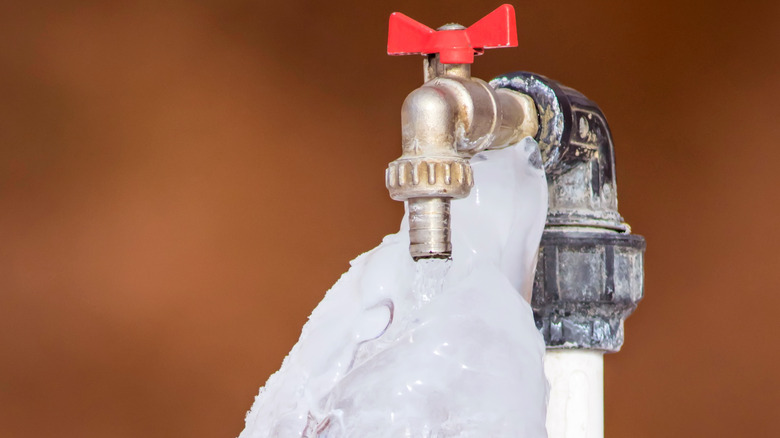Protecting Pipes from Freezing: Best Tips
Protecting Pipes from Freezing: Best Tips
Blog Article
Just how do you really feel when it comes to How to Prevent Your Pipes From Freezing?

Winter can ruin your plumbing, specifically by freezing pipelines. Below's how to avoid it from taking place and what to do if it does.
Introduction
As temperatures decrease, the risk of icy pipes increases, possibly resulting in costly repair work and water damages. Comprehending how to stop icy pipelines is important for home owners in cool climates.
Understanding Frozen Pipes
What causes pipes to ice up?
Pipelines freeze when revealed to temperatures below 32 ° F (0 ° C) for expanded durations. As water inside the pipes ices up, it expands, putting pressure on the pipeline wall surfaces and possibly creating them to rupture.
Dangers and damages
Frozen pipes can result in water system interruptions, building damage, and pricey repair work. Ruptured pipelines can flood homes and cause extensive architectural damage.
Signs of Frozen Pipeline
Recognizing frozen pipes early can stop them from breaking.
Exactly how to determine icy pipelines
Look for reduced water circulation from faucets, uncommon odors or noises from pipelines, and noticeable frost on exposed pipes.
Prevention Tips
Shielding vulnerable pipelines
Cover pipelines in insulation sleeves or use warm tape to protect them from freezing temperature levels. Focus on pipelines in unheated or exterior locations of the home.
Heating methods
Maintain interior areas properly heated, specifically locations with pipes. Open up closet doors to allow cozy air to flow around pipelines under sinks.
Protecting Outside Pipes
Yard hoses and exterior faucets
Detach and drain yard hose pipes prior to wintertime. Set up frost-proof spigots or cover outside taps with protected caps.
What to Do If Your Pipes Freeze
Immediate activities to take
If you presume icy pipes, maintain taps open up to soothe stress as the ice thaws. Make use of a hairdryer or towels soaked in warm water to thaw pipelines slowly.
Long-Term Solutions
Architectural modifications
Think about rerouting pipelines far from exterior walls or unheated areas. Add added insulation to attics, basements, and crawl spaces.
Updating insulation
Invest in high-quality insulation for pipes, attic rooms, and walls. Correct insulation aids keep regular temperature levels and reduces the threat of frozen pipelines.
Final thought
Stopping frozen pipes calls for aggressive actions and fast responses. By understanding the reasons, indications, and preventive measures, homeowners can shield their pipes during cold weather.
5 Ways to Prevent Frozen Pipes
Drain Outdoor Faucets and Disconnect Hoses
First, close the shut-off valve that controls the flow of water in the pipe to your outdoor faucet. Then, head outside to disconnect and drain your hose and open the outdoor faucet to allow the water to completely drain out of the line. Turn off the faucet when done. Finally, head back to the shut-off valve and drain the remaining water inside the pipe into a bucket or container. Additionally, if you have a home irrigation system, you should consider hiring an expert to clear the system of water each year.
Insulate Pipes
One of the best and most cost-effective methods for preventing frozen water pipes is to wrap your pipes with insulation. This is especially important for areas in your home that aren’t exposed to heat, such as an attic. We suggest using foam sleeves, which can typically be found at your local hardware store.
Keep Heat Running at 65
Your pipes are located inside your walls, and the temperature there is much colder than the rest of the house. To prevent your pipes from freezing, The Insurance Information Institute suggests that you keep your home heated to at least 65 degrees, even when traveling. You may want to invest in smart devices that can keep an eye on the temperature in your home while you’re away.
Leave Water Dripping
Moving water — even a small trickle — can prevent ice from forming inside your pipes. When freezing temps are imminent, start a drip of water from all faucets that serve exposed pipes. Leaving a few faucets running will also help relieve pressure inside the pipes and help prevent a rupture if the water inside freezes.
Open Cupboard Doors
Warm your kitchen and bathroom pipes by opening cupboards and vanities. You should also leave your interior doors ajar to help warm air circulate evenly throughout your home.

As an avid person who reads on How to prepare your home plumbing for winter weather, I imagined sharing that article was sensible. Sharing is nice. You never know, you may very well be helping someone out. Thanks for going through it.
Additional Resources Report this page